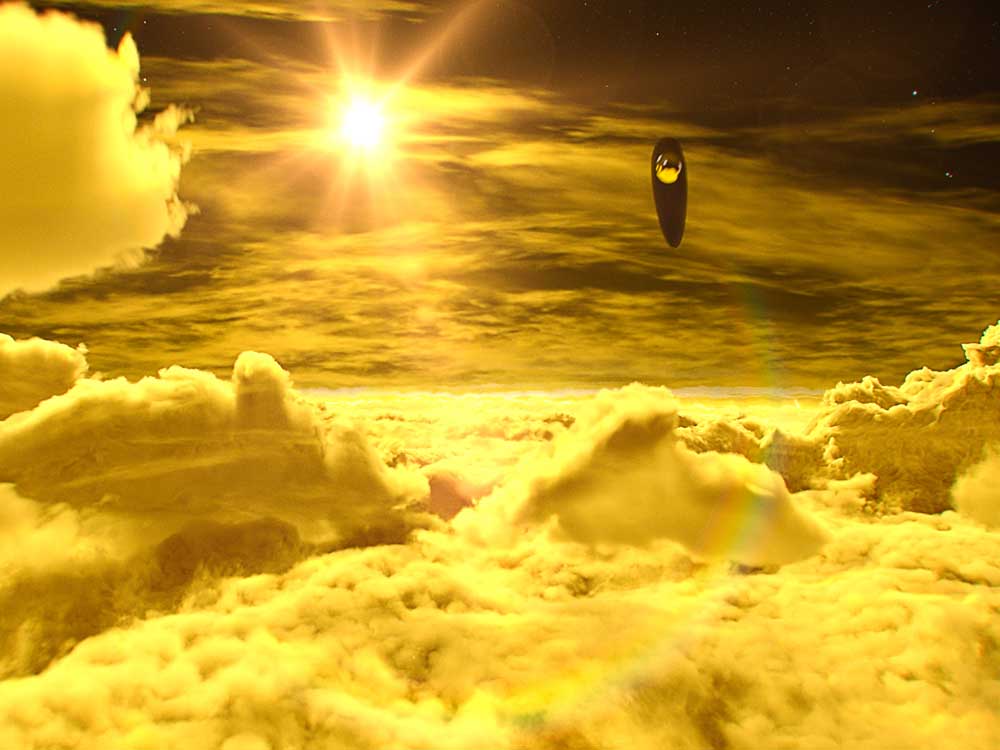‘Cosmos’ relaunches with exciting vision
Published 12:00 am Sunday, March 9, 2014

- Courtesy Newscom“Cosmos: A Spacetime Odyssey” premieres today on Fox, National Geographic Channel and affiliated outlets.
“Awesome” and “unique” are among the words that have been cheapened from overuse. For “Cosmos: A Spacetime Odyssey,” let’s restore both words to their rightful place.
This is an amazing example of what can happen when nonfiction TV is done with imagination, vision and purpose.
With the largest launch of a show in television history, it premieres today on 120 Fox networks and stations in 125 countries and on 90 National Geographic channels in more than 180 countries.
The show, though, is far more than the impressive numbers a media giant can deliver. It is what’s at the heart of it that excites: an unquenchable thirst for discovery.
That’s where host Neil deGrasse Tyson comes in. If you haven’t encountered him, Tyson, 55, is basically the only rock star astrophysicist around. The Bronx-raised scientist has a direct yet fun knack for explaining complex matters.
“The cosmos is all that is, or ever was, or ever will be,” Tyson says in the show’s introduction. “Come with me.”
With that, viewers embark on a journey that traverses time and space. For those wondering, the 13-episode series is a revival — but with new material — of Carl Sagan’s “Cosmos: A Personal Voyage.” That 13-episode series was PBS’ highest-rated series until “The Civil War” a decade later.
Sagan’s widow, Ann Druyan, is executive producer, writer and director. She joins Seth MacFarlane (yes, he of “Family Guy” and “Ted”), another executive producer and a fan of the original series.
“I had seen it as a child, and when I was in high school, saw it again and was able to process it in even more depth,” MacFarlane says at a press conference.
MacFarlane invited Tyson to lunch. As soon as they had appetizers, MacFarlane broached the subject of “Cosmos” and where it would air. At this point, Fox wasn’t considered.
“I said while National Geographic and Discovery Channel were some of the places that it was being considered to be pitched to, and are great networks, in a way, you’re sort of preaching to the converted. And wouldn’t it be nice to broaden it a little bit even more?” MacFarlane recalls.
Tyson instantly recognized the opportunity to take science to a more mainstream audience. One of the astrophysicist’s gifts is relating to different audiences, as Sagan had.
Sagan, a Cornell University scientist, had spent a day with the teenage Tyson.
“Some people have overstated my relationship with him, calling him my mentor,” Tyson says. “We only met four times, maybe five, but they were significant.
“First was my first encounter with him when I was in high school,” Tyson continues. “I had applied to colleges, and I had applied to Cornell, and I had already established an interest in the universe. And unknown to me, the admissions office forwarded my application to him. He then sent me a personal letter, unsolicited, asking if I wanted to visit and see if this were the right college. He was already famous. This was an extraordinary gesture. I wondered if it were even serious, and I made contact back. And I took the bus up to Ithaca, and he met me outside of his lab and gave me a tour and asked me about my ambitions and asked me what I was up to. And he reached behind the desk and signed a book, which I still have.”
Tyson also relates this story at the end of the first episode and shows the book and Sagan’s datebook from 1975, recording their meeting.
The pilot is a riot of colors and texture and of different genres. Tyson leads us on the ship of imagination, “where we can go anywhere.” The set has portals opening above, to the future, and below, to the past. The photos of space are so vibrant that viewers will want wall-sized TVs if only to gaze at Jupiter.
“The idea was when you are viewing this, you are not in the same place as you would be watching a television documentary, so the universe is bigger than your TV,” Tyson says.
The show employs animation, which is not goofy but can ease younger viewers into the show.
The first episode tells the story of Giordano Bruno, a 16th-century friar, who dared to say that the sun was merely another star moving in space. He also realized the universe contained unknown planets that could be populated by intelligent beings. He was burned at the stake.
Though visually different from the rest of the hour, the animated segment keeps the show’s pace. Druyan says the series’ aim is to be “wildly interdisciplinary and fearless.”
Additional episodes will take viewers, she says, “into the cell of a bear’s egg, the nucleus of a hydrogen atom, across the visible universe, down into a black hole. Science is this transporting journey across the 13.8 billion years of cosmic evolution.
“In the first series, Carl and I had this overwhelming feeling to share it with everyone,” Druyan says. “That’s what really fueled the original, and this is the same feeling. We have been through a period of hostility with science.”
Thirty-four years after its debut, the time is right for a relaunch, Druyan says, “because the power of the scientific perspective is, in my view, the most awesome way to experience life and the universe.”






